11 Best first-time Europe itineraries for 1, 2, or 3 weeks
Europe is going to be very busy in the summer of 2024 as the world is back to normal and travel demand is higher than ever. One other key factor is that most European currencies are still hovering at lower levels historically compared to the US dollar, which means that Europe will feel somewhat cheap again this year. In fact, according to our World Backpacker Index, European cities like Lisbon, Madrid, and Munich are about 30% cheaper to visit than Boston, Chicago, and New York City. In other words, flying to Europe might seem expensive, but most things will be cheaper once you get there compared to the costs of visiting a large US city.
Below you’ll find 11 of the most popular and best itineraries for a first visit to Europe. Your first visit is not really the time to be different or creative, and the famous destinations tend to be popular for a reason. In other words, it’s kind of silly to visit, say, Bulgaria, if you’ve not yet been to France or Italy. I lay out the best options along with how long to stay in each place as a general guide. I also discuss Mediterranean cruises, which can actually be an amazing way to see a lot of Europe on your first visit, especially if you don’t like going back and forth to train stations and airports every 2 or 3 days.
For a bit of fun you might be interested in the cheapest 5-star hotels in Europe, which start at US$80 per night for really nice hotels. It helps show that if you choose some of the cheaper cities, you can treat yourself to some luxury that you can’t afford in most other places.
This article was last updated in March, 2024.
There are 11 starter itineraries described in detail below
- Classic London and Paris
- England and Scotland
- Paris and Italy
- Mediterranean cruise
- France, Belgium, and Netherlands
- Paris and elsewhere in France
- Italy
- Spain
- Germany
- Switzerland
- Best of cheap eastern Europe
For each itinerary there are suggestions of other destinations that are easy to add on to the main cities.
Note: This article was most recently updated in March, 2024
Building the best itinerary for your first trip to Europe
Below there are 11 popular itineraries for one week in Europe. If you’ve only got a week then choose one of them and assume you’ll return again to conquer more of this amazing part of the world. If you’ve got more time then you can choose from some of the top add-on suggestions for each one.
Start in the most famous cities
Your first visit to Europe is no time to try to be different or edgy. I recommend that you focus on these 5 great cities before you start branching out into cheaper or more obscure places.
Keep your travel days to a minimum
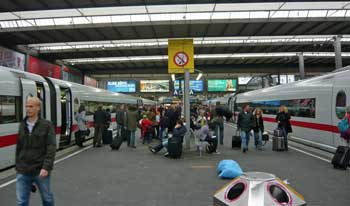
Spend 3 (or 4) nights in almost every major city
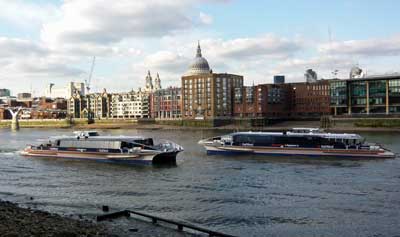
So many first-time visitors are initially planning on spending only 1 or 2 nights in major cities that I wrote a detailed explanation of why 3 nights is ideal for almost all European cities, even if you want to see as much as possible.
3 (or 4) nights will be enough for any city on your first trip
Most first-time visitors are tempted to move too quickly, but it can also be a mistake to move too slowly. It’s really amazing how much you can see in two full sightseeing days. If you spend too long in one city you’ll end up seeing things that are way down your list, while you could be in another city seeing things at the top of your list there.
Choose cities that are easy to reach from each other
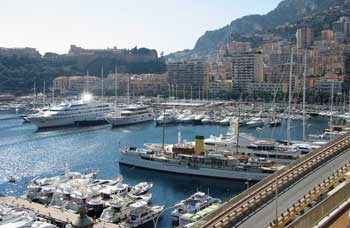
For your first trip it’s best to visit cities that are no more than a 5-hour train ride apart.
Choose cities that are connected by reasonable train rides rather than flights
To build on the point above, finding cheap flights within Europe is easy, but train travel is about a million times more enjoyable and less stressful. You’ll enjoy the train rides almost as much as the cities, so focus on places that are within 5 hours of each other by train.
Start with one of the classic itineraries below, and then add to it if you have more time
If you only have 7 days then you’ll find a list below of classic itineraries that are well-suited to a first visit to Europe. Hopefully you have more than 7 days though, and if you do you can add in one or more of the suggested add-on cities to build an itinerary that appeals most to you.
Best 1-week itineraries for the first time in Europe
Itinerary 1: Classic London and Paris
Fly into either city and take the 2-hour Eurostar train between them
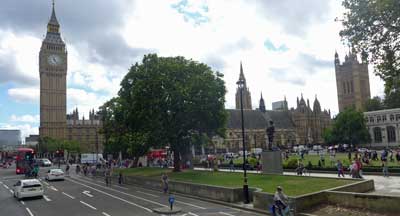
London highlights
- Big Ben and Parliament
- Westminster Abbey and St. Paul’s Cathedral
- Tower of London and Tower Bridge
- West End shows (Broadway equivalent) and classic pubs
- Buckingham Palace and Windsor Castle
Paris is actually far more beautiful than London and the food is famously much better as well. Since Paris gets so many tourists from non-French speaking countries, it’s easy to get by on just English, and the Metro system makes it fast and easy to get around. The architecture of both cities is amazing from the Tower of London, Big Ben, Westminster Abbey to the Louvre and the Eiffel Tower. These cities each pack a huge punch and they are very different from each other as well. Actually, England is arguably the best choice for your first trip to Europe.
Paris highlights
- Eiffel Tower
- Louvre Museum and Museum de Orsay
- Arc de Triomphe and other monuments
- Montmartre neighborhood and Sacré Coeur Cathedral
- Probably the world’s best affordable restaurants and wine
Best add-ons to London and Paris
- Edinburgh (2 or 3 nights, from London)
- Amsterdam (2 or 3 nights, from Paris)
- Bruges and Brussels (2 nights, from Paris)
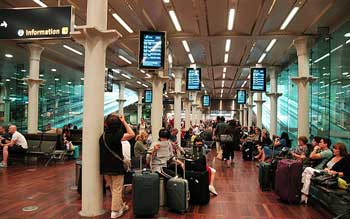
>>>Best one-week London and Paris itinerary in detail
>>>Check London hotel deals
>>>Check Paris hotel deals
Itinerary 2: England and Scotland
- London (3 or 4 nights)
- York (1 night)
- Edinburgh, Scotland (2 or 3 nights)
- Inverness, Scotland (2 or 3 nights)
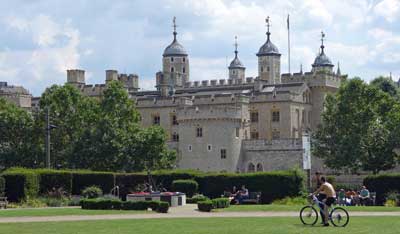
York is a small Roman city with intact city walls and one of the most famous cathedrals in Europe. Edinburgh is not only the capital of Scotland, but it’s easily the second most interesting city in all of Britain. If your time is short, skip York and spend more time in Edinburgh.
If you prefer to focus on the south of England on your first trip then the best option is to go to Bath or nearby Bristol after London. Bath is another of England’s top destinations and it’s a gorgeous city that has been a spa resort for many centuries. It’s also reasonably close to Stonehenge. You can also easily get to Cornwall in England’s southwest corner from Bath, and that’s a whole different and fascinating experience (with nicer weather than up north).
If you’ve got more than a week and want to spend more time in Scotland, especially in the summer months, the place to head to is Inverness. It’s a small town that is considered the gateway to the Scottish Highlands, but it’s an interesting and charming place on its own. You can take day-trips by bus to the highlights of the Highlands including the Isle of Skye and Loch Ness. Between you and me, it’s better to minimize time in Loch Ness or skip it altogether because it’s not one of the more photogenic parts of Scotland and the monster has always been a hoax.
Travel times between the recommended places
- London to York by train: 2 hours
- York to Edinburgh by train: 2.5 hours
- London to Edinburgh by train: 4 hours
- Edinburgh to Inverness by train: 3.5 hours
- London to Bath by train: 85 minutes
Best add-ons to England and Scotland
If you think you want to spend your whole trip in Britain you should have a look at our article on the best itineraries in England, Scotland, and Wales.
>>>Check London hotel deals
>>>Check Edinburgh hotel deals
Itinerary 3: Paris and Italy
- Paris (3 or 4 nights)
- Venice (1 night)
- Florence (2 or 3 nights)
- Rome (3 nights)
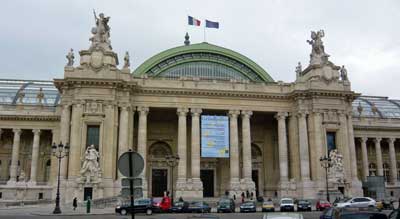
From Paris you can easily fly to Venice (or nearby Treviso) where you should try to spend about 24 hours. Venice is small enough to see in a full day, and so crowded that most people are satisfied to leave after that day. The key is to stay in the main part of the main island so you can enjoy Venice before the cruise passengers and day-trippers arrive, and also after they leave for the day. Two nights in Venice would not be wasted time, and it’s possibly the most gorgeous city in the entire world, but you can see the best of it in a bit over 24 hours.
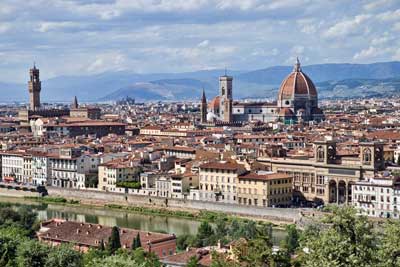
Rome also lives up to the hype and spending a day in the Vatican City will be a highlight even for non-Catholics, but it’s also a crowded and busy city so three days is usually enough for most people. Similar to Paris, Rome is an unusually beautiful city from almost any angle when you are in the historical center. You’ll walk through a stunning piazza (town square) and then turn a corner and you’ll see gorgeous buildings or public statues that are as nice as anything in the museums. Seriously, it’s worth a visit.
Paris to Venice flight: 1 hour 35 minutes
Venice to Florence by train: 1 hour 53 minutes
Florence to Rome by train: 1 hour 16 minutes
You can of course instead fly from Paris to Rome and then go north to Florence and then to Venice and fly home (or back to Paris) from there, and it would be just as enjoyable.
Best add-ons to Paris and Italy
France
- Nice/Cannes/Monaco (2 or 3 nights)
- Avignon (2 nights)
- Bourges (2 nights)
- Bordeaux (2 nights)
- Aix-en-Provence (2 nights)
- Reims (2 nights)
- Dijon/Burgundy (2 nights)
Italy
- Milan (1 or 2 nights)
- Lake Como (2 nights)
- Siena (2 nights)
- Cinque Terre (1 night)
- Naples/Sorrento/Amalfi Coast/Pompeii/Capri (3 to 5 nights)
- Sicily (3 to 4 nights)
>>>Much more information in this article about the best France and Italy itineraries
>>>Check Paris hotel deals
>>>Check Venice hotel deals
>>>Check Florence hotel deals
>>>Check Rome hotel deals
Itinerary 4: Mediterranean cruise
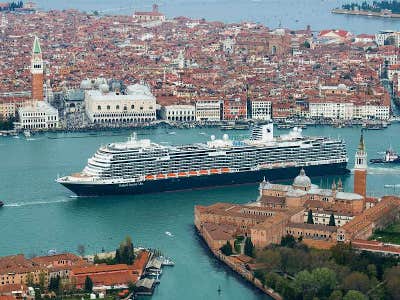
In spite of the reputation of cruises to be floating buffets, they can actually be an excellent way to visit a great number of amazing European cities in a short time. The ship typically is in port from the early morning until mid evening, often giving you the opportunity to have dinner in the city (unlike Caribbean cruises). Better still, the cruise ports are often near the center of town, so you can just walk off the ship and do sightseeing on foot or by public transportation.
Mediterranean cruises usually start at 7 nights but can go up to 3 weeks, which can provide an amazing tour of the entire region without having to pack and repack your bags more than once. They also can provide excellent value, especially compared to the price of taking trains or flights and finding new hotels in every destination.
Most popular Mediterranean departure ports
Barcelona, Spain – It’s an easy port to reach. Ships generally go from Barcelona with stops in France and then Italy.
Rome (Civitavecchia), Italy – The port isn’t very close to Rome, but it’s easy to get back and forth. Ships go west to France and Spain as well as south around the tip of Italy and then on to Croatia, Venice, and to Greece.
Venice, Italy – The cruise ships no longer dock close to the best tourist areas, but it’s easy enough to visit Venice for a day or two before boarding a ship. Ships starting in Venice go south and then head west and to Rome and then to France, or they go south to Croatia and then head east to Greece.
Athens, Greece – The cruise port of Piraeus is just south of Athens and easy to reach. Ships from Athens usually head west towards Croatia, Italy, France, and Spain, but there are also ships that visit Greek islands and Turkey.
>>>Check for deals on Mediterranean cruises
Alternative to consider: a river cruise
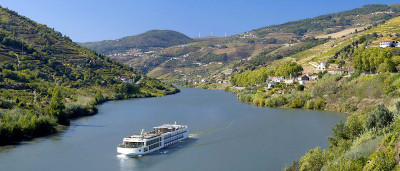
Amsterdam, Budapest, and Prague are some of the most popular river cruise ports, but there are dozens of others including many smaller towns in France where few other tourists will be when you stroll off the ship. There is little or no entertainment on the river cruise ships, but passengers don’t miss it because the entire day and into the evening is spent just steps from local cultural offerings and restaurants.
>>>Check for Europe and river cruise deals
Itinerary 5: France, Belgium, and Netherlands
Paris to Brussels: 1 hour 22 minutes
Brussels to Bruge: 58 minutes
Bruges to Amsterdam: 2 hours 45 minutes
Amsterdam to Paris: 3 hours 17 minutes
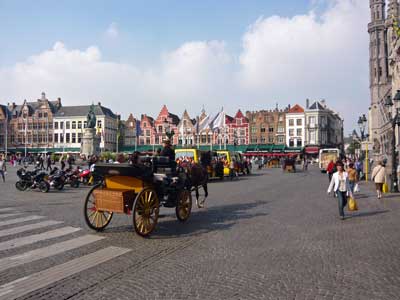
Spending 4 nights in Paris and 3 nights in Amsterdam would be a great trip, but if you want to see something else you’ve got a couple options in between. My advice is to spend an afternoon looking around the Grand Place (main square) in Brussels and then hop a 58-minute train ride to Bruges for a night or two. Brussels isn’t a great tourist city, but Bruges really is so it’s a better option for most people. Whatever you choose out of this group, you can be back in Paris on another high-speed train for your flight home.
Best add-ons to France, Belgium, and Netherlands
- Luxembourg City (1 or 2 nights)
- Cologne, Germany (1 or 2 nights)
- London (3 or 4 nights)
- Interlaken, Switzerland (2 or 3 nights)
>>>Check Paris hotel deals
>>>Check Bruges hotel deals
>>>Check Amsterdam hotel deals
Itinerary 6: Paris and elsewhere in France
- Paris (3 or 4 nights)
And a choice of:
- Nice/Cannes/Monaco (2 or 3 nights)
- Avignon (2 nights)
- Bourges (2 nights)
- Bordeaux (2 nights)
- Aix-en-Provence (2 nights)
- Reims (2 nights)
- Dijon/Burgundy (2 nights)
- Normandy (2 nights)
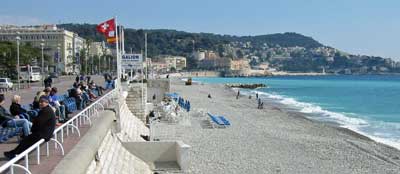
While Nice is a wonderful tourist city for a look at the French Riviera, the other larger cities of Lyon and Marseilles are probably better saved for a future trip because they are light on key sights compared to many smaller towns. Wine lovers can rent a car or take trains into Bordeaux or Burgundy. Since you can get between most of these towns by train in 2 hours or less, spending only 2 nights in each one is a reasonable option if you want to see a lot in a short time.
Normandy is an interesting choice and easy to reach in only about two hours by train from Paris. Some visitors like to see the famous WWII beaches and memorials, while others (especially in summer) like to check out one or more of the beach-resort towns. Deauville is one of the more famous of those, and it’s also famous for its horse race track and as one of the epicenters of the industry in Europe.
Best add-ons to Paris and elsewhere
- More France, of course
- London (3 or 4 nights)
- Interlaken, Switzerland (2 or 3 nights)
- Amsterdam (2 or 3 nights)
>>>Check Paris hotel deals
>>>Check Nice hotel deals
Itinerary 7: Italy
Rome to Florence: 1 hour 16 minutes
Florence to Venice: 1 hour 53 minutes
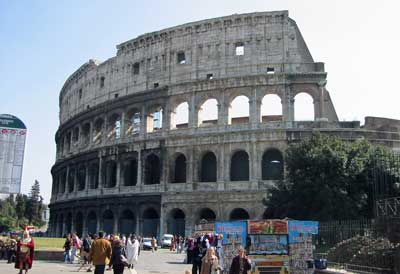
Venice is small enough that you can see the main sights in about 24 hours, and it’s so insanely crowded that many people tire of it after about a day as well. It’s better to pay more for a hotel to be on the main island and visit quickly than to save money with a hotel on the mainland where you’ll be in crowds going back and forth as well. Florence is the most relaxing of the 3, and also a great base for side trips to Pisa, Siena, and Cinque Terre, just to name a few.
Going to Italy? Here are the best first-time Italy itineraries for 3 days to 2 weeks (in much greater detail)
Best add-ons to Italy
- Milan (1 or 2 nights)
- Lake Como (2 nights)
- Siena (2 nights)
- Cinque Terre (1 night)
- Naples/Sorrento/Amalfi Coast/Pompeii/Capri (3 to 5 nights)
- Sicily (3 to 4 nights)
>>>Check Rome hotel deals
>>>Check Florence hotel deals
>>>Check Venice hotel deals
Itinerary 8: Spain
Madrid to Barcelona: 2 hours 30 minutes
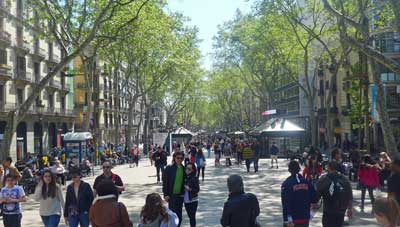
A huge part of Spain’s tourism industry is built around its southern beaches and islands such as Ibiza, Mallorca, and Tenerife (in the Canary Islands). For most people it’s best to ignore those places on your first trip because none of the beaches are special enough to spend days on them compared to the culture of the cities.
Best add-ons to Spain
By popular demand, I’ve added a full article on where to go in Spain with itineraries from 7 to 10 days up to two weeks.
>>>Check Madrid hotel deals
>>>Check Barcelona hotel deals
>>>Check Lisbon hotel deals
Itinerary 9: Germany
Berlin to Munich: 6 hours 2 minutes
Munich to Rothenburg ob der Tauber: 2 hours 56 minutes
Munich to Füssen: 2 hours 4 minutes
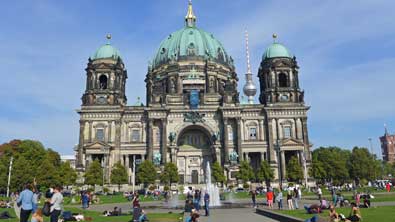
Those two cities are the keys to a Germany visit, and after that you’ve got a wide variety of choices. I cover most of the popular choices in my article on where to go in Germany, which covers several smaller towns that are major highlights.
Best add-ons to Germany
- Cologne (1 or 2 nights)
- Hamburg (2 or 3 nights)
- Amsterdam (3 nights)
- Prague (3 nights)
- Salzburg (2 or 3 nights)
- Vienna (3 nights)
- Interlaken, Switzerland (3 nights)
- Lucerne, Switzerland (2 or 3 nights)
>>>Check Berlin hotel deals
>>>Check Munich hotel deals
Itinerary 10: Switzerland
- Interlaken (3 nights)
- Bern (1 night)
- Lucerne (3 nights)
Zurich Airport to Interlaken: 2 hours 10 minutes
Interlaken to Bern: 53 minutes
Bern to Lucerne: 1 hour 50 minutes
Lucerne to Zurich Airport: 1 hour 3 minutes
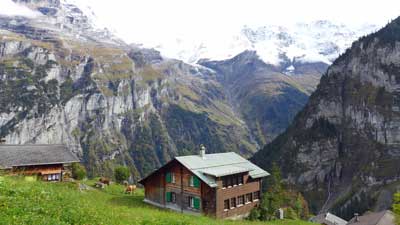
Interlaken is the best hub for the most dramatic Alps views and experiences. The one-hour cable car ride up to the Schilthorn observation deck is something you’ll never forget, and the only thing that might be more dramatic is the train ride up to the Jungfraujoch station, which is the highest in Europe. Lucerne is almost as beautiful with a scenic lake at its heart and also great mountaintop views nearby. If you do want to see a Swiss city then the capital of Bern is the most interesting and photogenic on a short visit. Read more about where to go in Switzerland for even more ideas.
Best add-ons to Switzerland
>>>Check Interlaken hotel deals
>>>Check Lucerne hotel deals
Itinerary 11: Eastern Europe’s best cheap cities
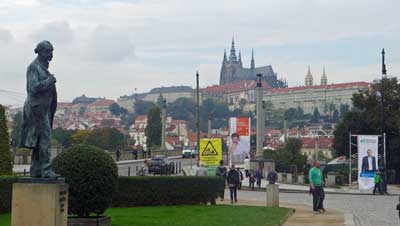
Each of these cities is beautiful and historic, but English is less widely spoken so they can also be quite a bit more challenging for a first-time visitor. Another difficulty is that the trains between them are still quite slow compared to the high-speed rail in the West, so it takes most of a day from one to another, and a bus is often a better choice. I cover this best cheap Europe itinerary more fully in the linked article.
Prague to Budapest: 6 hours 41 minutes
Budapest to Krakow: 9 hours 54 minutes (flying might be better)
Best add-ons to cheap Eastern Europe
- Cesky Krumlov, Czechia (2 nights)
- Ljubljana, Slovenia (2 or 3 nights)
- Split, Croatia (3 nights)
- Belgrade, Serbia (2 or 3 nights)
- Sarajevo, Bosnia and Herzegovina (2 or 3 nights)
- Sofia, Bulgaria (2 or 3 nights)
>>>Check Prague hotel deals
>>>Check Budapest hotel deals
>>>Check Krakow hotel deals


I am thinking about adding a agritourismo to my itinerary in the Tuscan countryside. I also want to visit Florence. We will rent a car to get explore the Tuscan countryside. The town of Pienza sounds nice. Have you been there? Also, my current itinerary includes 3 full days in Florence and 4 full days exploring Pienza and the Tuscan countryside. Is this too many days to spend in Tuscany? How many days would you spend at each location? Thank you.
Katherine,
I unfortunately haven’t been to any of the Italian hill towns, but whenever I see them from the train I remind myself that I should visit next time. Three days in Florence should be good. Many people do a half-day trip to Pisa to see the tower and cathedral, and you can fit that in the three days.
And I think four days in the countryside sounds amazing, especially if you are using them to take a break from city sightseeing after a few very busy weeks. Whenever I plan a travel break like that I like to find a place that is uncrowded and also doesn’t have many checklist attractions. I’d say even 3 nights with 2 full days of “not sightseeing” would be enough to recharge your batteries, but if you have the time and money I imagine an extra day would be lovely. I’m happy to help more if you have more questions. -Roger
Hi Roger,
Thanks for giving us such nice itinerary ideas. Me and my wife are planning for 10 to 15 days euro trip next year, possibly May 2022.
Can you advice us the best possible itinerary where in we can cover at least 4 to 5 countries and 7 to 8 cities?
Our budget would be around 3000 to 3500 USD(inclusive of flights and other travel). My major attractions are as follows: Amsterdam, Prague, Budapest, Rome, Paris.
If you can please let me know the best plan to travel.
Thanks.
Ravit,
I’m glad you found this useful. First off, I highly recommend spending 3 nights in almost any city you visit, so I’d recommend 5 or at most 6 cities. It also helps if the cities are fairly close together by train. Amsterdam and Paris are about 3 hours apart by high speed train, but Prague is a long way from both. The trains in the eastern countries are still quite slow, so Budapest to Prague isn’t a short train trip either. And of course Rome isn’t close to any of them. You could fly, but that is much less fun and much more hassle.
I’d recommend Paris and Amsterdam and then Berlin and then Prague as a fairly convenient order that can all by done by train. You could then go from Prague to Budapest by train in about 8 hours, or just fly. Since you are flying you could go anywhere, including Rome. Prague and Budapest are fairly similar so flying to Rome might be better. That way you could even visit Florence and/or Venice after or before Rome, and those would be very worthwhile. Venice can be enjoyed in about a full day because it’s quite small. That should give you something to start with.
Your budget should work, although you’ll have to stay in somewhat modest hotels to keep it under US$200 per day for two people including meals and transport. Let me know if you have any other questions. -Roger
Roger, Thank you for the advice. I will add one more day to Florence to make it 3 full days. Do you recommend I add one more day to Interlaken and one more day to Lucerne? Lastly, what small town in Italy could we stop at that would be along the train route? Your advice is so helpful.
Katherine,
I’d probably add one more day to Interlaken, as it’s where the real blockbuster sights are found. Also, it can rain or be foggy there on any day of the year and one more day could give you a bit of a cushion. If it’s foggy in the mountains you can do a day trip to Bern, and that would be worthwhile even if it’s not foggy in the mountains.
I don’t know of a specific smaller town in Italy, although a good place to look would be to Google ‘hill towns near Florence’ as I know there are several good ones there, and the hill towns are interesting in general, even without any major sights. Let me know if you have any other questions. -Roger
I found your website and read through most of the comments. It is very informative in planning my 5 week trip to Europe in September 2022. Will you give me advice on planning the best route and the number of nights at each destination. We are a couple in our mid 50’s and in good shape to travel. We want to take it at a leisurely pace with some touring and some down time as well.
Fly in to London
London 4 nights with 3 full days
London Eurostar to Amsterdam 4 night with 3 full days
Amsterdam train to Paris 7 nights with 6 full days
Paris train to Nice 4 nights with 3 full days
Nice train to Interlaken 3 nights with 2 full days
Interlaken to Lucerne 2 nights with 1 full day
Lucerne train to Venice 2 nights with 1 full day
Venice train to Florence 3 nights with 2 full day
Florence to Naples then directly to Sorrento (not overnight in Naples) 4 nights with 3 full days
Sorrento train to Rome 4 nights with 3 full days
Fly home from Rome
Would you change the route of this trip? Would you add another day to Florence or can I see most of Florence in 2 full days. We will take a side trip to Pisa but will skip Cinque Terre. Is 3 full days enough in Sorrento? I want to see Pompeii, Amalfi Coast and Capri. Are there any must see destinations I should add that will fit into this itinerary? We can extend this trip by a few more days if another destination interests us. Any advice would be very helpful.
Thank you
Katherine,
I’m glad this has helped. Your itinerary looks amazing actually. I might spend 1 or 2 fewer days in Paris and add them to Switzerland, but you won’t get bored in Paris in a week although you can see all of the top sights in only 3 or 4 days.
Adding an extra day to Florence could be good as well. The Pisa side trip can be done in 4 or 5 hours total, and I agree about passing on Cinque Terre if you are also going to Amalfi which is more interesting. Florence is pretty compact, but it’s wonderful so 3 full days could be good there.
As for Sorrento, you can pull that off in 3 full days. Sorrento is really nice and mellow itself, but there isn’t much to see so you can literally do day trips each day and be fine.
I can’t think of anything else to add to this. You’ve included all of the highlights and no filler. I honestly couldn’t have done better myself. Five weeks of visiting cities is pretty intense so I suppose one thing you could do is add in maybe two “days off” in the middle. Maybe you could stop for a couple days in a small town in Italy, perhaps at an agritourismo where you won’t be sightseeing at all? Your pace is pretty relaxed so you could push through the whole five weeks, but if you have time it might be fun to build in a couple of slow days.
As always, I hope this helps and let me know if you have any questions. I’m quite jealous! -Roger
Well, this plan is still far from today, but I am planning a Europe trip but I do not know how to know which to go first but my set plan is I should start in Paris and end in Malta. This is an 18 days trip. The plan I have now is Paris (4 days) > Switzerland (4 days) > Amsterdam (3 days) > Verona (1 day) > Rome (3 days) > Malta (3 days). Is this doable?
Aryl,
It’s a slightly unusual group of destinations, but it’s definitely doable. The only slightly tricky part will be reaching Verona, but I think it can be done by flying from Amsterdam to Milan and then doing the rest of Italy by train. Malta is kind of an odd choice to be honest, but it’s quite nice (as long as you don’t need a lot of sandy beaches). I’m guessing you have a specific reason to go there? I can give you some tips on that if you like.
Paris to Switzerland is best done by train. Switzerland to Amsterdam is a better flight because it’s faster, cheaper, and the scenery between them is very plain. Let me know if you have any other questions. -Roger
I found your website most helpful. We are dreaming of our delayed France/Italy trip post COVID and travelling from Toronto, Canada. We are looking to travel early September, 2022. Looking at other comments, we are thinking of starting in France and then Italy for 2.5 to 3 weeks. Can you give me an outline of a good itinery and the highlights and travel (ie. train/plane) starting in Paris and flying home from Rome. Thanks for your expertise.
Pamela,
I’m glad this has been helpful. I haven’t been getting many requests like this lately so I apologize for the delay. I’d do 3 or 4 nights in Paris and then take a train down to Nice for about 3 days to visit Monaco and Cannes as well, since they are both very short train rides away. Then take a train to Venice for a day or two. I’d spend the rest of the trip in Italy, with stops in Florence and Rome of at least 3 nights. You can look at the article above for more choices to add in Italy. Let me know if you have any other questions. -Roger
Thinking about a 10 to 14 day trip. My thoughts are Vienna to Salzburg to Where? The Vienna to Salzburg part is a no brainer in my estimation. I’m just lost from there. Should I hit interlocken and then head south to Italy or should I just do 10-14 days and do only Italy? Help!
John,
As I mention so often, I think 3 nights in each place is the sweet spot. So if you are doing Salzburg and Vienna (love both of them) then I’d include at least 1 to 2 more stops. The easiest places to reach from Austria are Prague and Munich, but neither of those provides much contrast to Austria. Salzburg is incredibly scenic, and the Interlaken area is even more scenic (although less charming). You could go there for a couple days and then head south to Italy, but that would only leave a few days in Italy at most and that may not be ideal.
Prague is quite a bit more interesting than Munich (in my opinion) so it might be best to go from Vienna to Cesky Krumlov for a couple days and then on to Prague.
However, if Italy really sounds appealing to you (and it should), then spending the whole 10 to 14 days in Italy would be amazing. I’m not sure how much this has helped, but I will try to help more if you have other questions as your trip draws near. -Roger
Hi Roger,
We are planning 2 weeks trip to Europe starting from New Zealand. Top on the list is to discover Paris, Italy and near by places. Places like Paris, Nice, Venice, Pisa, Florence, Siena, Rome, Naples, Pompeii, Vatican city and the list goes on.. What all cities we should cover?
Thank you so much!
Namita,
As I mention so often, I highly recommend staying in each city for 3 nights with only a few exceptions. So if you’ve got 14 nights I’d choose 4 or 5 stops. Paris should definitely be one of the stops and you might even spend 4 nights there. Then you can fly to Venice (or nearby Treviso) for 1 or 2 nights (Venice is small enough to see in a day or two). Then take a train to Florence for 3 nights and then a train to Rome for 3 or 4 nights before flying home from there. Those are all of the top highlights in France and Italy in an efficient package.
Vatican City is in Rome and you can see it in most of a day with a visit to the Vatican Museum (the Sistine Chapel is part of that tour) and then St. Peter’s Basilica. I’d save Pisa and Siena for a future trip. Naples and Pompeii could be done as a day trip from Rome, especially as Pompeii isn’t one of Italy’s safest cities at night. I’m happy to help more if you have other questions. It’s good to hear of someone planning travel again. -Roger
Hi Roger,
I have been planning a Europe trip for my daughter and I for her graduation next summer (she will be 18) and we have about 3 weeks, what cities would you recommend for a young girl for sightseeing and still fun with great restaurants and activities.
We have some family in London and Brussels and I would love to incorporate those.
We are also looking for ease of travel.
Thank you so much
Nadia,
I’d plan on 3 days in each of London, Paris, Amsterdam, Barcelona, and Madrid. You can stop for a couple days in Brussels in between Amsterdam and Paris. You’d still have time for one more city if you want to hurry and see more, or it could be better to spend 4 nights in London and Paris. I’m happy to help more if you are unsure how to plan it. -Roger
Hi Roger, Thanks for your help. My family of 4 (including 27 and 24 year old kids) will be re-visiting Europe next Summer if Covid is at bay. We are so torn between visiting cities we have been to and loved (Barcelona, Paris, Florence, London, Venice, Rome, Dublin) or others. We will be gone for 10 days and would like a mix. So maybe one revisit and 1-2 new. Thinking 1-2 from Amsterdam, Amalfi Coast, more of Tuscany than we saw, more of France, Greece. Any thoughts?
Paul,
Sorry about the slow reply. I’ve had so few questions like this recently that it slipped through the cracks. With 10 days I’d go for 3 or perhaps 4 total destinations. Also, it’s always much more efficient to string together places that are closer together, hopefully by train. It looks like you’ve done the main highlights of Italy so I’d save Amalfi for another trip.
My top suggestion if you want to revisit a place would be to fly into Paris and then use that as a hub. Amsterdam is only about 3 hours away by high-speed train and it’s an amazing place that is very different from all the ones you’ve visited. You could visit more places in France quite easily, of course, and there are some good suggestions in the article above. Cologne and Luxembourg City are also possibilities between Amsterdam and Paris.
If you just do Paris and Amsterdam then you could also easily visit London, or perhaps even better, fly into Edinburgh and experience Scotland and its highlands. During the summer that area is magical and the sun doesn’t set until very late in the evening. Again, sorry for the late response and let me know if you have any questions about any of this. I’m always happy to help and I’m REALLY looking forward to doing this daily starting again soon since it looks like this virus thing might be manageable soon. -Roger